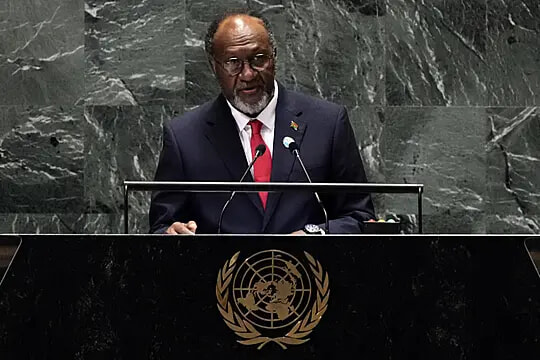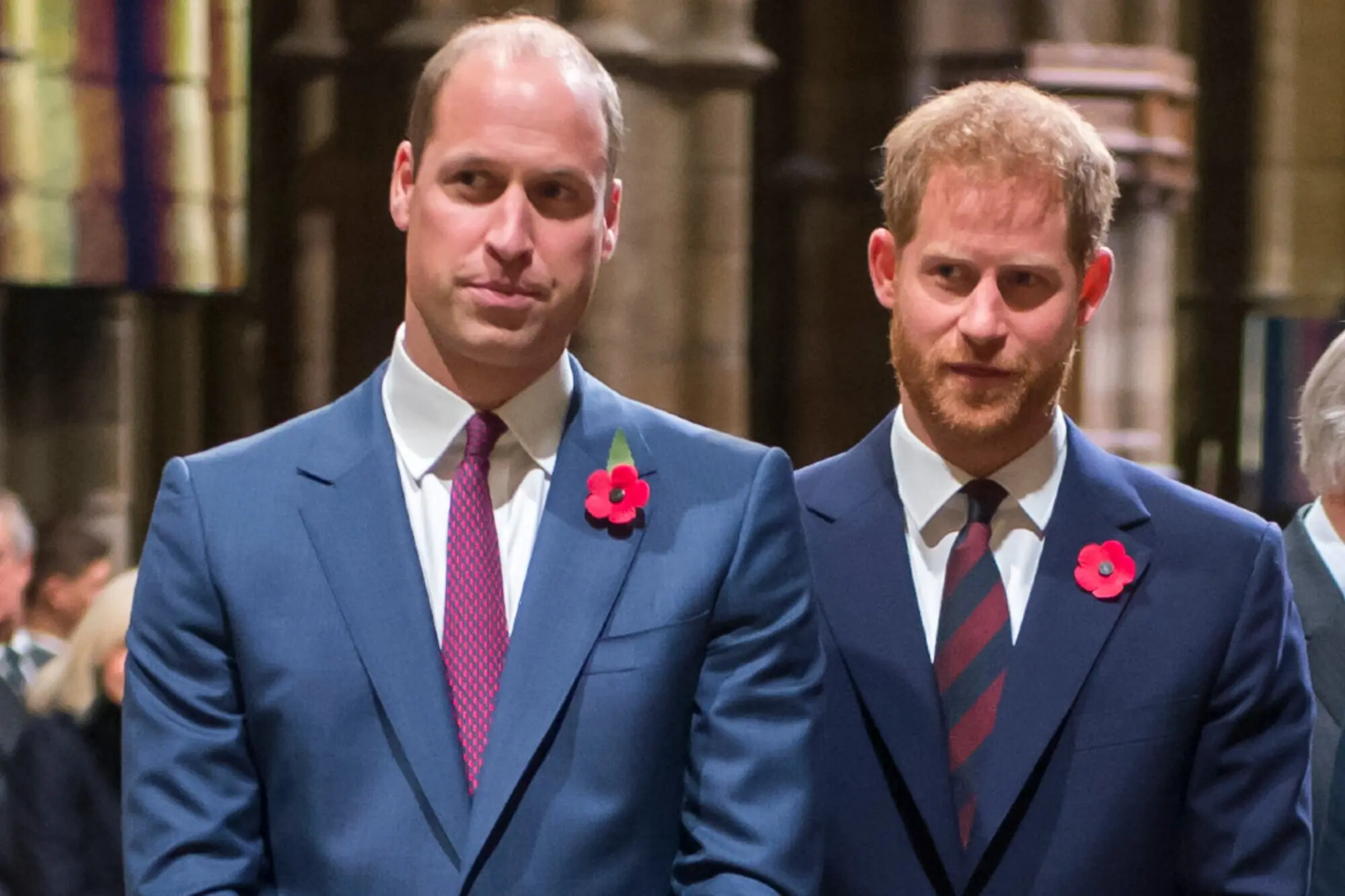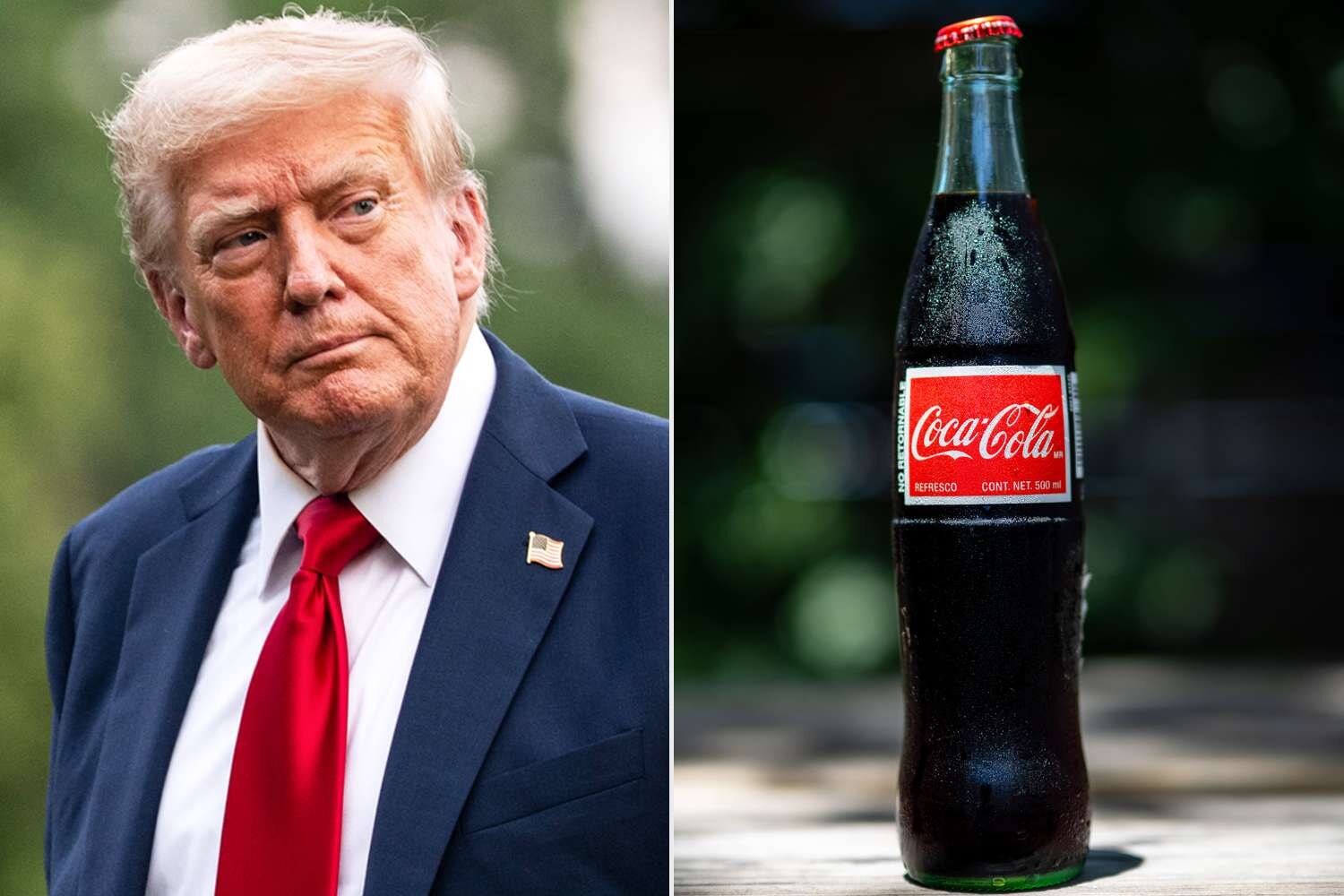
Minnesota Lawmaker Shot and Killed by Assassin Impersonating Cop
A sad story
Published June 19, 2025
Advertisement
Advertisement
1. The Attacks Unfold

In the predawn hours of June 14, 2025, Minnesota was shaken by targeted attacks on two prominent Democratic lawmakers and their families, sending shockwaves throughout the state and nation.State Representative Melissa Hortman and her husband, Mark, were found shot and killed in their Brooklyn Park home, while State Senator John Hoffman and his wife, Yvette, survived multiple gunshot wounds at their residence in Champlin.Authorities quickly determined the attacks were coordinated and politically motivated, with both homes targeted by a suspect impersonating a police officer.The suspect, identified as 57-year-old Vance Luther Boelter, used a fake police SUV equipped with emergency lights, wearing official-looking gear, to gain access to the victims' homes.Law enforcement responded rapidly, placing the affected neighborhoods under a shelter-in-place order and urging the public not to answer doors for anyone purporting to be a police officer acting alone.Officers arriving at the Hortman residence encountered Boelter as he exited the home, leading to a brief exchange of gunfire before the suspect escaped through the back of the house.A manhunt involving hundreds of officers from the FBI, state, and local agencies commenced, with Boelter considered armed, dangerous, and still at large as the day progressed.In the abandoned vehicle left at the scene, police found a manifesto and a list of more than fifty potential targets, including public officials and activists, raising fears of a broader threat.Officials also discovered flyers for the “No Kings” anti-Trump protests, prompting immediate cancellation of demonstrations across Minnesota out of an abundance of caution.The FBI offered a $50,000 reward for information leading to Boelter’s arrest, emphasizing the urgency and severity of the situation.As details emerged, the state and the nation watched anxiously, united in shock and grief at the targeted violence against their elected representatives.
Advertisement
2. Lawmakers and Families Targeted

The attack on Rep. Melissa Hortman and her husband was devastating in its precision and intent, leaving behind two children and a grieving community.Melissa Hortman, 55, served as Speaker Emerita of the Minnesota House, known for her advocacy in transportation, education, and environmental issues, and was deeply respected on both sides of the aisle.She and her husband Mark, 58, were celebrating over three decades of marriage, their lives interwoven through public service and family, until their tragic deaths at home.Sen. John Hoffman, 60, and his wife, Yvette, endured a harrowing ordeal, each suffering multiple gunshot wounds at their Champlin residence in the same coordinated attack.Yvette Hoffman acted with extraordinary courage, reportedly throwing herself over their adult daughter Hope to shield her from the bullets, a selfless act that saved her child’s life.Both John and Yvette underwent emergency surgeries and were reported to be in serious but stable condition, with authorities cautiously optimistic about their recovery.The assailant’s impersonation of law enforcement and use of deception amplified the fear and confusion for the victims and the wider community.These attacks left not only the families but all of Minnesota reeling, struggling to comprehend such targeted political violence against trusted public servants.The two families, once bound by friendship and the shared burdens of public life, now share an unthinkable trauma and loss that echoes across the state.Friends, colleagues, and constituents mourned the Hortmans while rallying around the Hoffmans, whose survival became a symbol of resilience amid tragedy.As the state mourned, attention turned to the search for justice and the prevention of further violence against public officials.
Advertisement
3. A Calculated Plot

Investigators swiftly uncovered that the shootings were not random but the result of a carefully orchestrated plan by Vance Boelter, a man with prior government connections.Boelter, who had previously served on the Governor’s Workforce Development Council and worked in security roles, was able to leverage his knowledge of law enforcement procedures in the execution of these attacks.Authorities found a detailed manifesto inside his abandoned police-style vehicle, explicitly listing lawmakers, activists, and officials as potential targets.The manifesto, paired with a cache of “No Kings” protest flyers, signaled a politically charged motive and pointed to possible broader intentions beyond the attacks already carried out.Officials also located a “hit list” containing over fifty names, suggesting the attacks on Hortman and Hoffman may have been the first in a series of planned assaults.Brooklyn Park and Champlin police, alongside the Minnesota Bureau of Criminal Apprehension and the FBI, acted quickly to notify and provide security to those named in Boelter’s documents.Further investigation revealed no evidence that Boelter was directly affiliated with any political party, though his writings displayed anti-establishment and conspiratorial rhetoric.Public safety alerts were issued, with all Minnesota lawmakers placed under protective custody and law enforcement across the state operating under heightened vigilance.The elaborate nature of Boelter’s plan, from the impersonation of police to the targeted timing, underscored the vulnerability of public officials in an era of growing political polarization.Authorities pressed the public for any leads, distributing photos and descriptions of Boelter and warning that he remained armed and extremely dangerous.With the suspect still at large, the search for answers and accountability became Minnesota’s top priority, as communities grappled with the implications of targeted violence against democracy itself.
Advertisement
4. Community in Crisis

The shootings upended daily life in the Twin Cities suburbs, transforming quiet neighborhoods into scenes of panic and uncertainty as law enforcement scoured the area.Shelter-in-place orders kept thousands of residents inside their homes, their safety threatened not by natural disaster but by political violence in their own communities.Police advised the public to verify the identity of any officer requesting entry and to call 911 if approached by anyone acting alone or displaying questionable credentials.Neighborhoods around the crime scenes saw a surge in uniformed officers, tactical teams, and helicopters, a jarring reminder of the severity and proximity of the threat.Social media channels filled with updates and warnings as the manhunt unfolded, with local leaders urging calm, cooperation, and vigilance.Community events, protests, and daily routines were abruptly halted, with the specter of further attacks casting a long shadow over the region.City officials, including the mayors of Brooklyn Park and Champlin, promised their communities would stand together in resilience and solidarity during the crisis.Mental health resources and counseling were quickly mobilized to support affected residents, officials, and especially the families of the victims.Churches and civic organizations opened their doors, offering support and a place to grieve, while local businesses contributed meals and supplies to first responders.As the crisis deepened, expressions of shock, sadness, and solidarity rippled across the state, reinforcing Minnesota’s commitment to healing and unity in the face of unprecedented violence.The tragedy fostered a rare moment of bipartisan resolve to support one another and defend the principles of democracy against threats of political extremism.
Advertisement
5. Political Shockwaves

News of the attacks reverberated rapidly through the Minnesota political landscape, sending lawmakers, staff, and their families into lockdown.Officials from both parties expressed horror and heartbreak at the violence, describing the events as an assault not just on individuals, but on the very fabric of democracy.Governor Tim Walz publicly denounced the shootings as a “politically motivated assassination,” ordering flags flown at half-staff and vowing to use every resource to apprehend those responsible.House Speaker Lisa Demuth and other legislative leaders called on Minnesotans to pray for the victims and support law enforcement in their pursuit of the suspect.Attorney General Keith Ellison, himself named in the suspect’s manifesto, pledged full support for the investigation and emphasized the need to confront political violence head-on.Senator Amy Klobuchar and other prominent Democrats remembered Melissa Hortman as a beloved friend and tireless public servant, while Republicans joined in condemning the attacks and offering condolences.The Minnesota State Patrol and Capitol security immediately enhanced protection for all state legislators, with some officials moved to undisclosed locations for their safety.Law enforcement agencies nationwide offered assistance, and U.S. Marshals and federal investigators joined the ongoing manhunt.Tributes and statements poured in from national leaders, including President Donald Trump and former President Joe Biden, both calling for unity and an end to political violence.The killings sent a chilling message to public officials everywhere, highlighting the urgent need for renewed security and a reaffirmation of civil discourse in American politics.The political community, often divided on policy, found common cause in condemning violence and defending the institutions of self-government.
Advertisement
6. The Manhunt Intensifies

As Saturday progressed, the search for Vance Boelter became the largest law enforcement operation Minnesota had seen in years.Hundreds of officers fanned out across Minneapolis and the surrounding suburbs, checking leads and combing through neighborhoods where Boelter had last been seen.Authorities released surveillance images showing Boelter in a light-colored cowboy hat, dark collared shirt or coat, light pants, and carrying a dark bag, warning the public not to approach.Special tactical teams used drones, helicopters, and canine units to search wooded areas, abandoned buildings, and transportation hubs in hopes of intercepting the fugitive.The FBI’s $50,000 reward was heavily publicized, with tip lines flooded by calls from citizens eager to assist, though credible sightings remained scarce.Local businesses and residents shared security footage with police, and the TSA was alerted to prevent the suspect from fleeing by air.Investigators dug into Boelter’s background, contacts, and prior appointments to state boards, seeking clues to his current whereabouts and possible accomplices.Rumors and false alarms spread quickly, adding to the community’s anxiety as official sources urged patience and reliance on verified information.As dusk fell, a sense of unease lingered, with no clear indication of the suspect’s capture and an entire state holding its breath for news of resolution.Officials reassured the public that every available resource was being deployed, and that the safety of lawmakers and civilians remained the highest priority.Through it all, Minnesota’s law enforcement showed resolve and professionalism, determined to bring the perpetrator to justice and restore peace to the community.
Advertisement
7. National and Local Responses

Reactions to the attacks came swiftly from leaders at every level, with calls for unity, resilience, and an end to political violence dominating public discourse.Governor Tim Walz, speaking for the state, expressed deep personal grief at the loss of Melissa and Mark Hortman and reaffirmed Minnesota’s values of civil debate and peaceful disagreement.Senator Amy Klobuchar, a longtime friend of Hortman, called the murders “an attack on everything we stand for as a democracy,” pledging to continue the work her colleague so passionately believed in.Attorney General Keith Ellison, whose own name was on Boelter’s list, spoke movingly about Hortman’s wisdom and care, calling for grace, kindness, and a recommitment to decency in politics.President Donald Trump and former President Joe Biden, as well as former House Speaker Nancy Pelosi and Arizona’s Gabby Giffords, condemned the violence and urged Americans to reject extremism in all its forms.The Minnesota Democratic–Farmer–Labor Party and state Republican leaders joined together in mourning, setting aside differences to honor the victims and their families.Community vigils, moments of silence, and bipartisan statements marked the days following the tragedy, underscoring the impact of the loss on every corner of Minnesota life.Protests and demonstrations were canceled out of respect and concern for safety, while the threat to democracy itself became the central topic in public and political forums.Mental health support, security details, and outreach to traumatized officials were expanded, reflecting a newfound urgency in protecting those who serve in public life.As leaders reflected on the gravity of the attacks, a determination emerged not only to pursue justice for the victims but to confront the causes of political violence in a deeply divided nation.Minnesota, reeling from loss, resolved to emerge stronger and more united, in defense of democracy and the values that bind its people together.
Advertisement
8. Honoring the Victims

The lives of Melissa and Mark Hortman, taken in the most violent of circumstances, became the focus of tributes from colleagues, constituents, and family.Melissa’s career as a legislator was marked by passion, integrity, and dedication, with achievements in education, the environment, and social justice remembered by those she served.Friends and family described her as strategic, compassionate, and deeply committed to her community, recalling memories of both public achievements and private kindness.Mark Hortman, a program manager and devoted husband, was celebrated for his quiet support and partnership, his presence at Melissa’s side in all facets of life.The couple’s children, Sophia and Colin, were embraced by a grieving state, with promises from leaders and friends to honor their parents’ legacy in word and deed.Sen. John Hoffman, though wounded, was uplifted by outpourings of support for his survival and recovery, his wife Yvette hailed as a hero for her actions during the attack.Vigils, memorials, and social media tributes proliferated, reflecting the depth of the loss and the solidarity of a state determined not to let violence define its future.Colleagues spoke of the “irreplaceable” nature of Melissa’s leadership and Mark’s partnership, pledging to continue their unfinished work and keep their memory alive in policy and service.The tragedy prompted new conversations about security, the risks of public service, and the responsibilities shared by all citizens in protecting democracy.Through the pain, Minnesota’s resolve to honor its fallen leaders became a beacon of hope and determination, guiding the community through mourning and toward action.In every remembrance, the message was clear: the values for which Melissa and Mark lived would not be silenced by violence.
Advertisement
9. Broader Implications

The attacks in Minnesota highlighted an alarming rise in politically motivated violence across the United States, fueling urgent calls for reform and vigilance.Officials and commentators pointed to a pattern of threats and attacks against public servants, drawing parallels to incidents such as the attempted assassination of Gabby Giffords and the assault on Paul Pelosi.Law enforcement, political analysts, and advocacy groups called for enhanced protection measures, improved intelligence sharing, and more robust responses to domestic extremism.Debates over access to firearms, the proliferation of conspiracy theories, and the rise of anti-government rhetoric intensified in the aftermath, as communities sought answers and solutions.The discovery of manifestos, target lists, and connections to political protests underscored the complexity and danger of modern extremism, both online and offline.Political leaders faced renewed pressure to lower the temperature of public discourse and address the root causes of violence, from social fragmentation to the spread of misinformation.Communities and institutions across the country took heed, with increased security at public events, town halls, and government offices becoming the new normal.The attacks sparked legislative efforts to review and strengthen protections for elected officials, while advocates pressed for broader measures to safeguard democracy.As the manhunt for Boelter continued, the specter of political violence loomed large, forcing a reckoning with the values and vulnerabilities of American society.Minnesota’s experience became a cautionary tale, a rallying cry, and a moment of reflection on the costs of division and the urgent need for unity.The lessons drawn from tragedy prompted both grief and resolve, driving leaders and citizens alike to safeguard the democratic institutions at the heart of American life.
Advertisement
10. Toward Healing and Justice

In the aftermath of the attacks, Minnesota began the long process of mourning, healing, and recommitting to the values threatened by violence.Law enforcement remained relentless in their pursuit of Vance Boelter, urging anyone with information to come forward, as the state refused to let fear prevail.State leaders coordinated with federal agencies, mental health professionals, and community organizations to ensure both immediate security and long-term recovery for those affected.Tributes to Melissa and Mark Hortman continued, with promises to support their children and carry forward their legacy in public service and civic engagement.The Hoffmans’ survival and ongoing recovery became a symbol of resilience, inspiring others to stand strong in the face of trauma and adversity.Minnesota’s response—swift, unified, and determined—set a powerful example for other states facing similar challenges to democracy and public safety.The tragedy prompted new legislative efforts, community dialogues, and security measures designed to prevent future acts of political violence and protect those who serve.As the state reflected on its losses, it also celebrated the heroism, compassion, and solidarity that defined its response to darkness and loss.Minnesota’s journey from shock to action served as a reminder that democracy endures not only through laws and institutions, but through the courage and commitment of its people.In honoring the victims and pursuing justice, Minnesota vowed to uphold the principles that had been attacked—peaceful discourse, public service, and the unbreakable bonds of community.As the state and nation moved forward, the resolve to prevent future violence and strengthen democracy stood as the enduring legacy of those lost and those who survived.
Advertisement
Advertisement
You May Also Like






